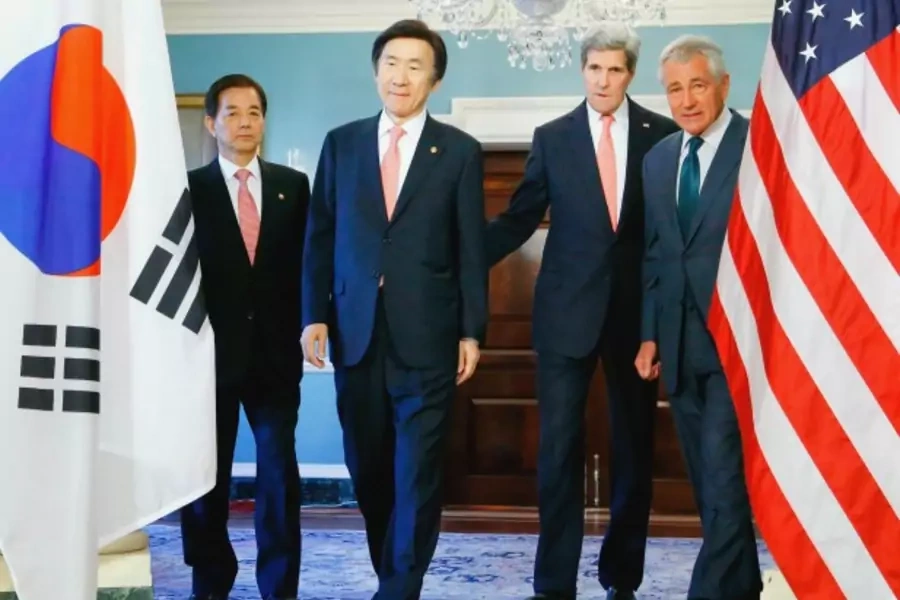More on:
The U.S.-South Korea alliance has grown deeper since 2009, when Presidents Obama and Lee Myung-bak announced a U.S.-ROK Joint Vision Statement that expanded the framework for bilateral cooperation beyond the Korean peninsula to regional and global issues. This statement set the stage for both deeper U.S.-ROK security coordination toward North Korea and for South Korean contributions to anti-piracy missions in the Gulf of Aden and South Korean participation in the ISAF mission in Afghanistan. The vision was reaffirmed by Park Geun-hye last year in Washington on the occasion of the 60th anniversary of the founding of the alliance. I argue in my chapter for National Bureau of Asian Research’s most recent volume, Strategic Asia 2014-2015: U.S. Alliances and Partnerships at the Center of Global Power, that further implementation of this broadened vision has created new internal and external challenges.
The internal challenge is one that derives from the growth in South Korea’s military capabilities that has accompanied the evolution of the U.S.-ROK security alliance from a patron-client relationship to a strategic partnership. Now that South Korea brings substantial capabilities to the table, it is inevitable that there will be domestic debates over the extent to which South Korea should pursue homegrown capabilities (internal balancing) versus relying on procurement or supply of capabilities through the alliance (external balancing). The challenge is to find a mix that enables development of indigenous capabilities without coming at the expense of the alliance. To illustrate how these tensions have been manifested and managed, I describe the evolution of South Korea’s approach management of operational control arrangements and missile defense.
The external challenge to the alliance comes from a China that increasingly seeks to limit U.S.-ROK alliance cooperation to the peninsula and to confine U.S.-ROK alliance aims and rationales solely to North Korea. As a result, China has objected to South Korean military equipment sales to other U.S. allies such as the Philippines and is currently mounting a vociferous public campaign against the stationing of Theater High Altitude Advanced Defense (THAAD) capabilities on the Korean peninsula.
But China’s objection to the placement of THAAD capabilities on the peninsula will ring hollow as long as North Korea continues to test and develop missile capabilities that could overwhelm or compromise South Korea’s existing missile defenses. Instead, China’s objections highlight a gap between China’s characterization of alliances as Cold War relics and the U.S. position that its alliances are vital as both an important contributor to U.S. power and as a logical starting point for the U.S. rebalance. In this respect, the U.S.-ROK alliance will likely face larger challenges in the future to the extent that China contests it. However, China’s objections to the alliance themselves may ultimately serve as a compelling rationale for why broadened alliance cooperation should be sustained.
More on:
 Online Store
Online Store
